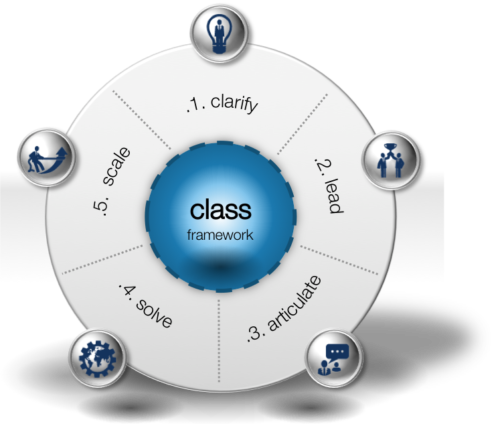Having been involved in designing and delivering demand response programs for many years, I often get asked “what is your approach” or “what lessons have you learnt”.
Demand Response is deservedly getting increased attention here in Australia, and as a result of the recent COAG Energy Council meeting, it will not be too long before it becomes a core part of our energy mix.
For those of you who have read my recent book, The Digital Utility, it will come as no surprise that most of my ‘lessons learnt’ focus on people and not on technology. You will also not be surprised that I have taken these lessons and developed a framework. Referred to as CLASS, the framework below helps me take a structured and repeatable approach to designing and delivering demand response programs.
The CLASS framework consists of:
clarify: Describe demand response in the context of your business strategy and its benefits to you, your customers, and the communities you serve.
lead: Describe your demand response leadership structure and stakeholder groups, capturing the perceptions and expectations from each of your stakeholders.
articulate: Create a clear, concise, and consistent narrative to tell your stakeholders why demand response will benefit them (for those of you who have read The Digital Utility, you will be familiar with the importance I place on being able to tell a compelling story).
solve: Describe the problems you are trying to solve, identify the opportunities you are trying to explore, and clearly articulate what success looks like.
scale: Identify areas of your program that will likely need to be revisited as you scale out. Pilots and proof of concepts should be designed to test a specific hypothesis. Much of your pilot program will need to change if you are to achieve success at scale.
I am currently researching for my next book, with a focus on the successful introduction of demand response and the role the negawatt will play in our future. The book will explain the CLASS framework in detail to help others on their demand response journey.
In addition to my own experience, the book is based on the many interviews I have had with demand response practitioners, academics, and thought leaders. Their feedback has been invaluable in strengthening the CLASS framework.
Over the coming weeks, I will share my personal experiences with each section of this framework and I would encourage you to share yours in the comments of this blog.
If you are a demand response practitioner and would like to contribute to my research, please let me know. I treat all input confidentially, you can choose to be listed as a contributor, and most importantly, you will be playing a part in helping progress the adoption of demand response in our industry.
To keep up-to-date with my latest articles, subscribe to my blog in the footer below.
My best-selling book, ‘The Digital Utility’, is available for purchase here.
